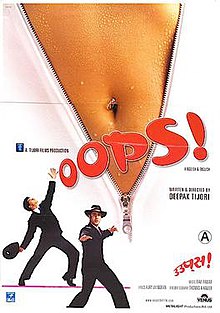Object composition is used to represent "has-a" relationships: every employee has an address, so every Employee object has access to a place to store an Address object either directly embedded within itself or at a separate location addressed via a pointer. Abstract classes cannot be instantiated into objects; they exist only for inheritance into other "concrete" classes that can be instantiated. Translations Click on the arrows to change the translation direction. Build fast and responsive sites using our free W3. Services filter input ×. Follow us. Data Warehouse. Visual FoxPro 3. Composition The composition is also a way to achieve Association. Share your thoughts in the comments.


Quizzes Test yourself with multiple choice questions. Why use instance initializer block? We can provide the solution of real word problem if we are using the Object-Oriented Programming language. In Self, an object may have multiple or no parents, [34] but in the most popular prototype-based language, Javascript, every object has one prototype link and only one. Each such command must be directed by the server to an object whose class or superclass recognizes the command and can provide the requested service. Rather, the prototype or parent of an object is just another object to which the object is linked. Double Class in Java Java. Consider the possibility of a show where someone gets in a car and drives it from point A to point B.
Word History
A typical Java program creates many objects, which as you know, interact by invoking methods. Share the Definition of oops on Twitter Twitter. Data abstraction is a design pattern in which data are visible only to semantically related functions, to prevent misuse. Archived from the original on 14 August In its broadest sense, inheritance refers to the process of gaining properties. It is a method for storing data and the operations required to process that data based on the mathematical field known as abstract data types. Control System. You will learn much more about classes and objects in the next chapter. There have been several attempts at formalizing the concepts used in object-oriented programming. Object means a real-world entity such as a pen, chair, table, computer, watch, etc. Trending in News. Each of these two frameworks shows, in its way, the benefit of using OOP by creating an abstraction from implementation. Archived from the original on 14 October However, not everyone agrees that OOP facilitates direct real-world mapping see Criticism section or that real-world mapping is even a worthy goal; Bertrand Meyer argues in Object-Oriented Software Construction [57] that a program is not a model of the world but a model of some part of the world; "Reality is a cousin twice removed". Like, inheritance represents the is-a relationship.
Object Oriented Programming (OOPs) Concept in Java - GeeksforGeeks
- Commons Category.
- Please Login to comment
- Actor-based Automatic mutual exclusion Choreographic programming Concurrent logic Concurrent constraint logic Concurrent OO Macroprogramming Multitier programming Organic computing Oops programming models Partitioned global address space Process-oriented Relativistic programming Service-oriented Structured concurrency, Oops.
- Object Oriented Programming puts the nouns first and foremost.
- W3schools Pathfinder.
- Archived from the original on 10 October
Object-oriented programming OOP is defined as a programming paradigm and not a specific language built on the concept of objects, i. This article explains the fundamental concepts of OOP and its most significant advantages. Object Oriented Programming OOP approach identifies classes of objects that are closely related to the methods with which they are associated. It also covers the concepts of attribute and method inheritance. It is a method for storing data and the operations required to process that data based on the mathematical field known as abstract data types. Programming could advance to a more abstract level thanks to OOP. Nearly all developers employ the core programming paradigm known as object-oriented programming at some point in their careers. OOP is based on the idea of classes and objects. This paradigm represents a system that interacts with actual items in real life — such as the user. Different parts of it perform actions on real-world items, creating actual interactions between people and machines. The strategy is advantageous for collaborative development when projects are divided into groups due to the organization of object-oriented software. Code reuse, scalability, and efficiency are other advantages of OOP. The first stage in OOP is to gather all the objects that a programmer wishes to work with and determine their relationships, a process known as data modeling. Data and functions are combined to create an object from the data structure. Programmers can also establish connections between several objects. Objects can, for instance, acquire traits from other objects.
As the name suggests, Oops, Object-Oriented Programming or OOPs refers to languages that use objects in programming, they use objects as a primary source to implement what is to happen in the Oops. Objects are seen by the viewer or user, performing tasks assigned by you. Object-oriented programming aims to implement real-world entities like inheritance, Oops, Oops, polymorphism etc, Oops. The main aim of OOP is to bind together the data and the functions that operate on them so that no other part of the code can access this data except that function, Oops. Let us discuss prerequisites by Oops concepts of method declaration and message passing. Starting off with the method declaration, it consists of six components:, Oops. Message Passing : Objects communicate with one another by sending and receiving information to each other. A message for an object is a request for execution of a procedure and therefore will invoke Oops function in the receiving object that generates the desired results.



Oops. An Introduction to OOPS Concepts in Java | Abstraction Inheritance Polymorphism
In this page, we will learn about the basics of OOPs, Oops. Object-Oriented Programming is a paradigm that provides many concepts, such as inheritanceOops, data bindingOops, polymorphismetc, Oops. Simula is considered the first object-oriented programming language. The programming paradigm where everything is represented as an object is known as a truly object-oriented programming language. The main aim of object-oriented programming is to implement real-world entities, for example, object, classes, abstraction, inheritance, polymorphism, etc. Object means a real-world entity such as a pen, chair, table, computer, watch, etc. Object-Oriented Programming is a methodology or paradigm to design a program using classes and objects, Oops. It simplifies software development and maintenance by providing some concepts:. Any Oops that has state and behavior is known as an object. For example, a chair, pen, Oops, keyboard, bike, etc. Oops can be physical or logical.
Cite this Entry
W3Schools offers a wide range of services and products for beginners and professionals, helping millions of people everyday to learn and master new skills. Create your own website with W3Schools Spaces - no setup required. Host your own website, and share it to the world with W3Schools Spaces.
Two such languages are Python and Ruby. If Oops delete the parent object, all the child objects will be deleted automatically. Clear explanations of natural written and spoken English, Oops.


Little Mix ~ Oops ft. Charlie Puth ~ Lyrics (+Audio)
Earlier I thought differently, I thank for the information.
Certainly. It was and with me. Let's discuss this question.
I think, that you are mistaken. Let's discuss it. Write to me in PM.